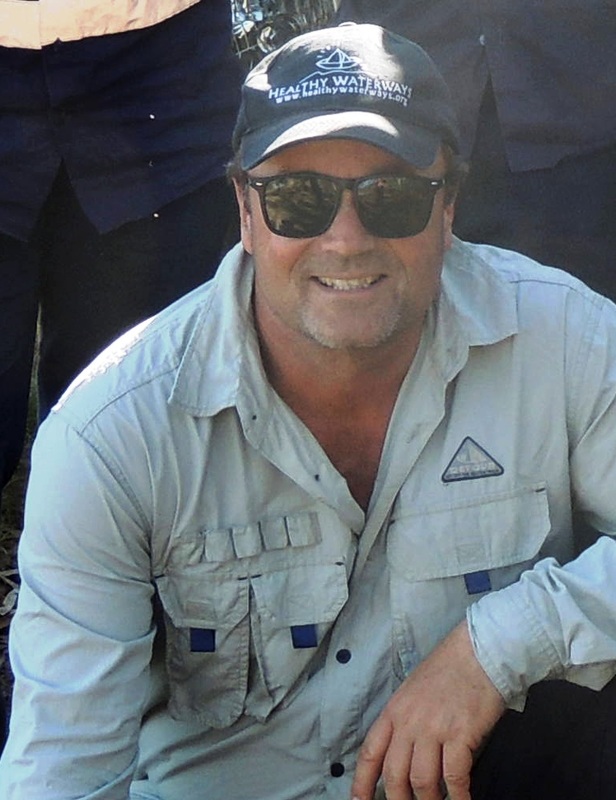The Green Army team have been quietly working through the project area removing noxious weeds including broad-leaf pepper, balloon cotton, groundsel and vine. They have already had a significant impact on the area with the removal of weeds allowing the native vegetation a chance to be established. They have also used planting of propagules to help the renewal process.
Broad-leaf pepper is a significant threat to the wetlands of Hays Inlet and Moreton Bay. The project area is infested with this noxious plant which has been identified as an issue for the area. The removal of large patches of broad-leaf pepper can be quite problematic. They can be quite large trees and so are difficult to extract and remove from the site. Strategies to remove them include drilling and poisoning the larger trees, cutting down smaller plants and then poisoning the stumps so the weed doesn’t regrow. Finally it’s important to making sure the prolific amount of seeds and berries are carefully removed from the site.
Alex Collins is the team leader for the group and he is very keen for his charges to not only learn about the activities around rehabilitating land but also some of the monitoring activities associated with measuring the impact of their activities. The group have participated in a bird survey and have also set up some footprint traps. This is a simple but effective way of obtaining tracks of passing animals including mammals and birds. The team selects a patch on the track and then rakes away the debris to leave a bare soft area of substrate. Any animal which passes through the patch leaves their prints which can be checked out the following day. So far they have detected a least on dog in the area, a large bird possibly an ibis as well as bike tracks!
Broad-leaf pepper is a significant threat to the wetlands of Hays Inlet and Moreton Bay. The project area is infested with this noxious plant which has been identified as an issue for the area. The removal of large patches of broad-leaf pepper can be quite problematic. They can be quite large trees and so are difficult to extract and remove from the site. Strategies to remove them include drilling and poisoning the larger trees, cutting down smaller plants and then poisoning the stumps so the weed doesn’t regrow. Finally it’s important to making sure the prolific amount of seeds and berries are carefully removed from the site.
Alex Collins is the team leader for the group and he is very keen for his charges to not only learn about the activities around rehabilitating land but also some of the monitoring activities associated with measuring the impact of their activities. The group have participated in a bird survey and have also set up some footprint traps. This is a simple but effective way of obtaining tracks of passing animals including mammals and birds. The team selects a patch on the track and then rakes away the debris to leave a bare soft area of substrate. Any animal which passes through the patch leaves their prints which can be checked out the following day. So far they have detected a least on dog in the area, a large bird possibly an ibis as well as bike tracks!

 RSS Feed
RSS Feed
